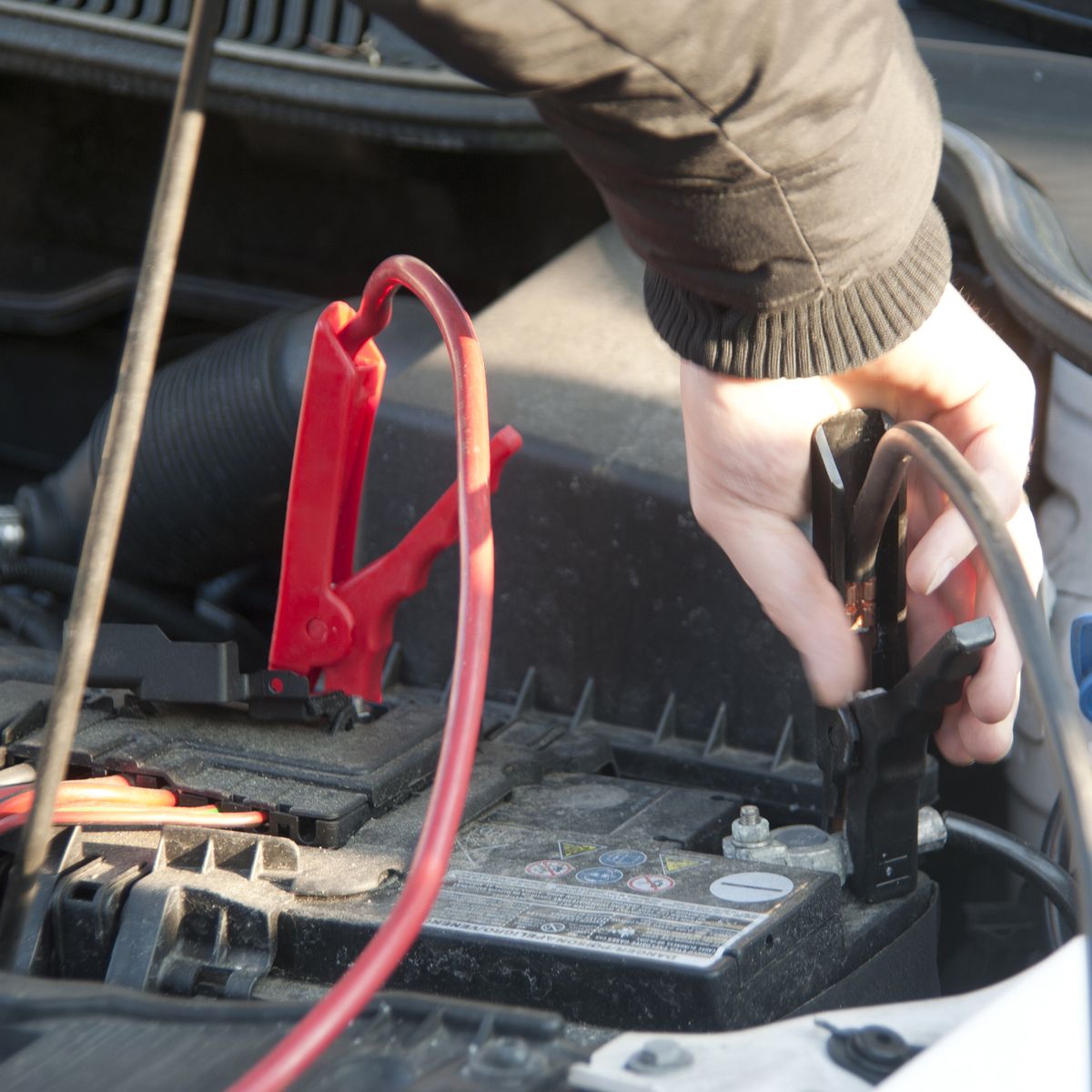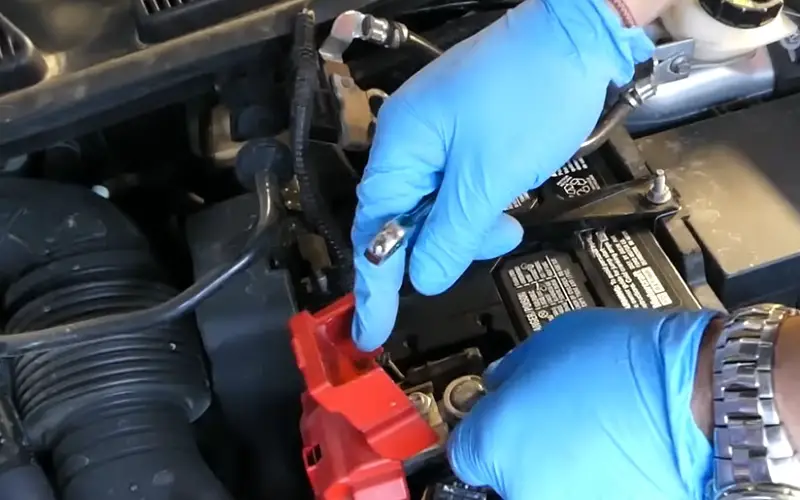When connecting a car battery charger, always connect the positive terminal first, followed by the negative terminal. This sequence is important to avoid electrical hazards and damage to the vehicle.
Ensuring the correct order of connecting terminals is crucial when using a car battery charger. By following this guideline, you can safely charge your vehicle’s battery without any risks. Be mindful of the potential dangers associated with incorrect connections, such as short circuits or sparks.
Prioritize safety and adhere to best practices when working with car battery chargers to maintain the integrity of your vehicle’s electrical system.
Contents
- Importance Of Properly Connecting A Car Battery Charger
- Understanding Car Battery Terminals
- Step-by-step Guide To Connecting A Car Battery Charger
- Common Mistakes To Avoid
- Tips For A Safe And Effective Charging Process
- Faqs
- Can I Connect The Charger Directly To The Battery Terminals?
- What Happens If I Connect The Charger Terminals In Reverse?
- How Long Does It Take To Fully Charge A Car Battery?
- Can I Leave The Charger Connected Overnight?
- Is It Safe To Charge A Completely Dead Battery?
- Which Terminal Do You Connect First On A Battery Charger?
- Does It Matter Which Battery Terminal You Hook Up First?
- What Order Do You Connect Battery Chargers?
- Which Way Do You Connect A Car Battery Charger?
- Conclusion
Importance Of Properly Connecting A Car Battery Charger
When it comes to connecting a car battery charger, it is crucial to do it correctly to avoid potential hazards and prevent damage to the vehicle’s electrical system. If the terminals are connected improperly, it can lead to dangerous situations and expensive repairs.
Avoiding Potential Hazards
Connecting the car battery charger in the right manner is essential for your safety. If you connect the charger to the wrong terminals, you risk causing a short circuit, which can result in sparks, electrical shocks, or in some cases, even an explosion.
It is crucial to follow the manufacturer’s instructions or your vehicle’s manual to ensure you connect the charger correctly and avoid these potential hazards.
Preventing Damage To The Vehicle’s Electrical System
Properly connecting a car battery charger is not just about your safety; it also plays a significant role in preventing damage to your vehicle’s electrical system.
If the charger is connected to the wrong terminals, it can cause damage to sensitive components like the alternator, starter motor, or even the vehicle’s onboard computers. These damages can lead to expensive repairs and inconvenience.
To ensure you prevent any harm to the electrical system of your vehicle, follow these steps when connecting a car battery charger:
- Start by identifying the positive (+) and negative (-) terminals on your car battery.
- Ensure the charger is switched off and unplugged before making any connections.
- Connect the charger’s positive clamp (marked with red) to the positive terminal on the battery.
- Connect the charger’s negative clamp (marked with black) to the negative terminal on the battery.
- Once the clamps are securely attached, you can plug in and switch on the charger.
- Monitor the charging process and disconnect the charger after the battery has reached the desired charge.
By following these simple steps, you can ensure that you properly connect the car battery charger, minimizing the risk of hazards and potential damage to your vehicle’s electrical system.
Always prioritize safety and refer to the manufacturer’s instructions for specific guidance related to your car battery charger.

Understanding Car Battery Terminals
When connecting a car battery charger, it’s important to know which terminal to connect first. This understanding ensures a safe and efficient charging process for your car’s battery.
Positive Terminal (+)
The positive terminal on a car battery is marked with a plus sign (+) and is typically red in color. This terminal delivers power to the vehicle’s electrical systems and components.
Negative Terminal (-)
The negative terminal on a car battery is marked with a minus sign (-) and is usually black in color. This terminal acts as the ground and completes the electrical circuit in a vehicle.
Step-by-step Guide To Connecting A Car Battery Charger
When it comes to maintaining your car’s battery, it’s essential to know how to properly connect a car battery charger. This step-by-step guide will walk you through the process, ensuring that you can do it confidently and without any hassle.
Gather The Necessary Tools
Before you begin, make sure you have all the necessary tools at hand. You will need a car battery charger, safety goggles, and a pair of insulated gloves to protect yourself from any potential electrical hazards.
Identify The Positive And Negative Terminals
Locate the positive and negative terminals on the car battery. The positive terminal is usually marked with a plus sign (+), while the negative terminal is marked with a minus sign (-). It’s essential to identify these terminals correctly to avoid any potential mishaps.
Connect The Charger’s Positive Clamp To The Positive Terminal
Using the red or positive clamp on the car battery charger, securely attach it to the positive terminal on the car battery. Ensure that the connection is tight and secure to avoid any accidental disconnection during the charging process.
Connect The Charger’s Negative Clamp To A Solid Ground
Find a solid, unpainted metal surface under the car’s hood to act as the grounding point. Attach the black or negative clamp from the charger to this point. This will complete the circuit and allow for a safe and effective charging process.
Double-check The Connections
Once all the connections are in place, double-check that the positive and negative clamps are securely attached to the respective terminals and the grounding point. Ensuring proper connections is crucial for the safety and effectiveness of the charging process.
Common Mistakes To Avoid
When connecting a car battery charger, avoiding common mistakes can help ensure a safe and effective process.
Being aware of potential errors and taking necessary precautions is essential for maintaining the integrity of the battery and preventing damage to the vehicle. Here are some common mistakes to avoid when connecting a car battery charger:
Reverse Polarity
Incorrectly connecting the positive and negative terminals of the battery charger can result in reverse polarity. This mistake can cause severe damage to the vehicle’s electrical system and should be avoided at all costs. Always double-check the polarity before initiating the charging process.
Loose Connections
Ensuring a secure connection between the battery and the charger is crucial for effective charging. Loose connections can lead to inefficient charging and may pose a safety hazard. Always check the connection to guarantee a snug and secure fit before starting the charging process.
Using An Incompatible Charger
Utilizing a charger that is not compatible with your car’s battery can lead to various complications. It’s essential to use a charger that matches the voltage and capacity requirements of the battery to avoid overcharging, undercharging, or other potential issues. Always refer to the manufacturer’s guidelines for selecting the appropriate charger.
Tips For A Safe And Effective Charging Process
To safely and effectively charge a car battery, it is crucial to connect the charger to the correct terminal first. Always start by connecting the positive terminal, followed by the negative terminal, to ensure a safe and efficient charging process.
This method helps prevent any potential hazards and ensures a smooth charging experience. Ensure proper ventilation when connecting a car battery charger.
Ensure Proper Ventilation
Proper ventilation prevents gas buildup while charging the battery.
Use A Charger With The Correct Amperage
Using the right amperage prevents damage to the battery and vehicle.
Monitor The Charging Process
Regularly check the charging progress to ensure it is going smoothly.
Disconnect The Charger Safely
Follow the correct procedure to disconnect the charger safely after charging. Remember, safety is crucial when dealing with car battery charging.
Faqs
In this section, we will address some frequently asked questions about connecting a car battery charger.
Understanding the correct terminal to connect first, the consequences of reversing the terminals, the charging time required, and the safety of leaving the charger connected overnight are all important factors to consider when maintaining your car battery’s health.
Can I Connect The Charger Directly To The Battery Terminals?
Yes, you can connect the charger directly to the battery terminals. It is the most common and recommended method for charging a car battery.
By connecting the charger directly, you ensure a stable electrical connection, allowing the charger to provide the necessary current to replenish the battery.
What Happens If I Connect The Charger Terminals In Reverse?
If you accidentally connect the charger terminals in reverse, it can result in damaging the charger or the battery.
Reversing the terminals may cause a short circuit, leading to sparks, overheating, and potentially damaging sensitive components in your car’s electrical system.
It is crucial to double-check the polarity and ensure the charger’s positive cable is connected to the positive terminal of the battery and the negative cable to the negative terminal.
How Long Does It Take To Fully Charge A Car Battery?
The charging time required to fully charge a car battery depends on several factors, including the battery’s capacity, the charger’s charging rate, and the battery’s current state of charge.
Typically, it takes around 4 to 8 hours to charge a car battery fully. However, it is essential to consult the charger’s manual for specific charging times and follow the manufacturer’s recommendations.
Can I Leave The Charger Connected Overnight?
While some chargers are designed for long-term charging, it is generally not advisable to leave the charger connected to the battery overnight.
Continuous charging after the battery is fully charged can lead to overcharging, which can be detrimental to the battery’s health.
Overcharging can cause battery damage, reduce its lifespan, and may even result in the release of harmful gases. It is best to disconnect the charger once the battery has reached a full charge.
Is It Safe To Charge A Completely Dead Battery?
Yes, it is safe to charge a completely dead battery. However, it is essential to follow the correct charging procedures. When charging a dead battery, it is advisable to use a slow or trickle charger to prevent the battery from overheating.
These chargers provide a low and steady current, allowing the battery to recharge safely without causing damage.
Additionally, it is important to ensure proper ventilation in the area where you are charging the battery to avoid the accumulation of potentially hazardous gases.

Which Terminal Do You Connect First On A Battery Charger?
Connect the positive terminal first on a battery charger. POSITIVE comes first for the connection.
Does It Matter Which Battery Terminal You Hook Up First?
It is important to connect the positive battery terminal first to prevent any electrical short-circuits.
What Order Do You Connect Battery Chargers?
Connect battery chargers in the following order: First, connect the positive (+) terminal of the charger to the positive terminal of the battery.
Then, connect the negative (-) terminal of the charger to the negative terminal of the battery. Ensure correct polarity to avoid damage or electrical hazards.
Which Way Do You Connect A Car Battery Charger?
To connect a car battery charger, first, turn off the charger and car ignition.
Next, attach the red clamp to the positive (+) terminal and the black clamp to the negative (-) terminal. Finally, plug in the charger and turn it on.
Conclusion
In a nutshell, connecting a car battery charger is a simple task. Just remember: positive terminal first, then negative. Following this order ensures safety and avoids any electrical mishaps.
By being mindful of the correct sequence, you can effectively charge your car battery hassle-free.

